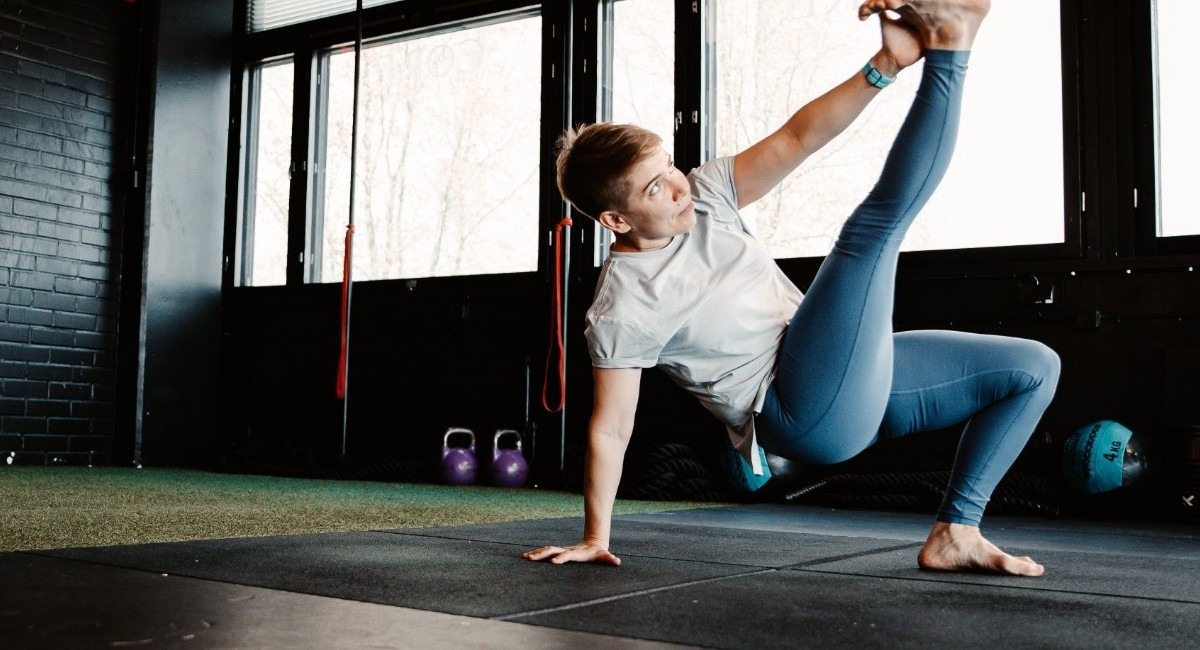
Strength Training for Kids: Safe & Effective Exercises
Strength training, when done safely and effectively, offers a multitude of benefits for children. It helps build strong muscles and bones, improves balance and coordination, boosts self-confidence, and instills healthy habits. By focusing on proper form, starting light, and making it fun, you can help your little one embark on a journey of strength and well-being.
💪 Fitness Guru
17 min read · 4, Feb 2025

Introduction: Building a Foundation for Strength
Strength training for children is all about building muscle strength and endurance. It involves using resistance, whether it's their own body weight, light weights, or resistance bands, to work specific muscle groups. It's not about bulking up like a bodybuilder; it's about developing functional strength that will help them in all their activities, from playing tag to carrying their schoolbooks.
Why Strength Training is Beneficial for Children
Oh, there are so many reasons why strength training is a gift for children! First and foremost, it strengthens their muscles and bones. This makes them less prone to injuries and helps them maintain good posture. It's like building a strong house on a solid foundation.
Strength training also improves their balance and coordination. Think about all those exercises that require them to control their body movements! This translates to better agility and overall physical performance. It's like learning to dance gracefully.
It's also a wonderful way to boost their self-confidence. As they see themselves getting stronger, they feel more capable and empowered. It's like discovering a hidden superpower.
And let's not forget the long-term benefits. Strength training can help children develop healthy habits that will last a lifetime. It's like planting a seed that will grow into a strong and beautiful tree.
Safety First: The Golden Rules of Strength Training
Now, how do we make sure our little ones are lifting safely? It's all about following some golden rules.
- Proper Form is Key: This is the most important rule of all. Children need to learn the correct form for each exercise to avoid injuries. It's like learning the alphabet before writing a sentence. Start with bodyweight exercises and gradually introduce light weights or resistance bands.
- Supervision is Essential: Children should always be supervised by a qualified instructor or a knowledgeable adult when strength training. It's like having a guide on a hiking trip.
- Start Light and Slow: Don't rush into heavy lifting. Begin with light weights or just bodyweight exercises and gradually increase the resistance as they get stronger. It's like learning to ride a bicycle before entering a race.
- Focus on Technique, Not Weight: It's more important to perform the exercises correctly than to lift heavy weights. Quality over quantity, always! It's like painting a masterpiece with careful strokes, not just splashing paint on a canvas.
- Rest and Recovery: Muscles need time to recover after a workout. Make sure your little one gets enough rest between strength training sessions. It's like giving a plant time to absorb water and nutrients.
- Listen to Your Body: Encourage children to listen to their bodies and stop if they feel any pain. It's like knowing when to take a break during a long walk.
Effective Strength Training Exercises for Children
Now, let's explore some safe and effective exercises that children can do.
- Bodyweight Exercises: These are a great starting point. They require no equipment and can be done anywhere. Examples include push-ups (modified on their knees if needed), squats, lunges, planks, and Supermans. These exercises use the child's own body weight as resistance.
- Resistance Bands: Resistance bands are a versatile and affordable way to add resistance to exercises. They're great for exercises like rows, bicep curls, and triceps extensions. They provide a gentle and progressive way to build strength.
- Light Weights: As children get stronger, they can gradually introduce light dumbbells or kettlebells. It's important to choose weights that are appropriate for their age and strength level. Focus on exercises like overhead presses, deadlifts (with very light weight and proper form), and rows.
Creating a Fun and Engaging Strength Training Routine
Now, how do we make strength training fun for children? It's all about making it a game!
- Make it Playful: Turn exercises into games. For example, you can have a "push-up challenge" or a "squat competition" (with proper form, of course!). It's like learning through play.
- Use Music: Put on some upbeat music to make the workout more enjoyable. It's like dancing while exercising.
- Variety is Key: Mix up the exercises to keep things interesting. Don't just focus on one muscle group. It's like eating a rainbow of fruits and vegetables.
- Set Goals: Help children set realistic goals and celebrate their achievements. It's like climbing a mountain one step at a time.
- Make it a Social Activity: Encourage children to work out with friends or family members. It's like having a workout buddy.
Beyond the Physical: The Mental and Emotional Benefits
The benefits of strength training go beyond just physical health. They also contribute to a child's mental and emotional well-being.
- Improved Mental Focus: Strength training requires concentration and focus, which can help improve cognitive function. It's like sharpening the mind.
- Boosted Self-Esteem: As children see themselves getting stronger, they gain a sense of accomplishment and confidence. It's like discovering their inner strength.
- Stress Relief: Exercise is a great way to release stress and tension. It's like letting go of worries.
- Discipline and Perseverance: Strength training teaches children the importance of discipline and perseverance. It's like learning to never give up.
Q&A Section:
Q1: My child is very active in sports. Do they still need strength training?
Ans: Yes, strength training can complement sports activities by strengthening muscles that are used in specific sports. It can also help prevent injuries. However, it's important to tailor the strength training program to the specific needs of the sport.
Q2: What if my child is not interested in traditional strength training exercises?
Ans: That's perfectly fine! There are many other ways to build strength, such as climbing, swimming, and playing active games. The key is to find activities that your child enjoys and that challenge their muscles.
Q3: How often should my child do strength training?
Ans: Aim for two to three strength training sessions per week, with rest days in between. It's important to allow muscles time to recover.
Q4: Are there any specific strength training programs or resources you recommend?
Ans: Yes, there are many great resources available online and in your community. You can search for "youth strength training programs" or consult with a certified personal trainer who specializes in working with children.
Similar Articles
Find more relatable content in similar Articles

The Science of Breathwork: Fitness Beyond Muscles...
Exploring how conscious contro.. Read More

Fitness Lessons from Wild Animals – Move Like Nature Intende..
“Discover how observing wild a.. Read More

The Silent Workout: Fitness Without Any Equipment or Noise...
“Discover the power of silent .. Read More

Microbiome and Muscle: Gut Health as a Hidden Fitness Tool...
Unlock the hidden potential of.. Read More
© 2024 Copyrights by rFitness. All Rights Reserved.